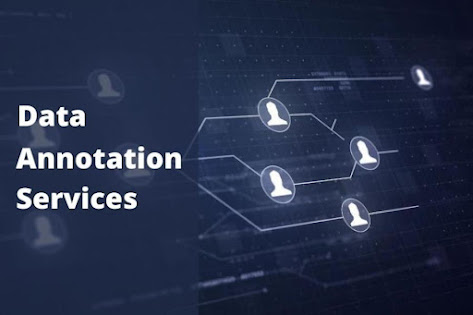Next-Gen Robotics: How Image Annotation Services Are Fueling Technological Advancements
Introduction
In the rapidly evolving landscape of robotics, the integration of artificial intelligence (AI) technologies is not just an enhancement—it's a revolution. Central to this revolution are image annotation services, which are proving to be pivotal in advancing robotics, making machines not only autonomous but also significantly more intelligent. As outlined by GTS.ai, a leader in AI and machine learning solutions, the accuracy and efficiency of machine learning models depend heavily on the quality of the data used during the training phase. Here, we delve into how image annotation services are setting the stage for major technological breakthroughs in next-gen robotics.
The Role of Image Annotation Services in Robotics
Image annotation services involve labelling or tagging images with metadata to make the visual contents machine-readable. This process is crucial for training AI models, particularly those involved in robotics, to recognize, interpret, and react to visual data. In a typical scenario, these services help annotate a wide array of images—from simple objects to complex scenes—each meticulously labelled to train AI algorithms on what they are seeing.
The value provided by high-quality image annotation is immense. For instance, in industrial robotics, machines learn to identify defective products or operational anomalies through thousands of annotated images that depict various potential issues. This training enables robots to perform quality control autonomously, with precision surpassing human capabilities.
Enhancing Capabilities with Video Annotation
While image annotation offers a static view, video annotation extends these capabilities by adding the temporal dimension to the data. Video annotation services involve tagging and labelling video clips frame by frame to provide contextual and dynamic information that is crucial for training models to understand and predict movement and interactions.
In robotics, this is particularly useful for applications requiring a high degree of interaction with changing environments, such as autonomous vehicles and drone navigation. According to GTS.ai, annotating videos with accurate tags like traffic signals, pedestrian movements, or varying weather conditions can significantly improve how autonomous systems perceive and respond to their surroundings in real-time.
The effectiveness of robotic systems heavily depends on the quality of training data. High-quality image annotation delivers accurate and reliable data that enhance the AI’s ability to make correct interpretations and decisions. Services that provide detailed, precise annotations enable robotic systems to function effectively in complex, real-world scenarios, reducing errors and enhancing efficiency.
Case Studies: Image and Video Annotation in Action
Autonomous Vehicles
In the realm of autonomous vehicles, both image and video annotation are indispensable. These services help vehicles understand their environment by recognizing lane markings, other vehicles, pedestrians, traffic lights, and road signs. Advanced driving assistance systems (ADAS) rely on meticulously annotated datasets to improve their decision-making processes under diverse traffic and weather conditions.
Manufacturing Robotics
Robotics in manufacturing has transformed from simple programmable machines to complex systems capable of making autonomous decisions. For example, robots equipped with AI trained through annotated images can identify irregularities in materials and decide the necessary actions without human intervention. Video annotation extends these capabilities further by allowing robots to understand and adapt to dynamic conditions on the manufacturing floor, such as moving conveyors and human interactions.
Challenges and Future Prospects
Despite the significant benefits, integrating image and video annotation services into robotics presents challenges. High-quality data annotation requires considerable human effort and expertise, especially when dealing with complex scenarios. Moreover, ensuring privacy and dealing with data bias are other critical challenges that need addressing.
As technology advances, the demand for more sophisticated image and video annotation tools will continue to grow. AI and machine learning models are becoming increasingly capable, requiring more detailed and nuanced data. Future advancements may include automated annotation techniques or enhanced collaborative tools that allow for more efficient data labelling, potentially reducing costs and speeding up the development of robotic systems.
Why GTS.AI is Your Premier Choice for Image Annotation Services in 2024
At Globose Technology Solutions Pvt. Ltd. (GTS.AI), we specialise in premier image annotation services essential for enhancing AI applications in 2024. Our dedicated team meticulously annotates images to ensure your AI models are trained with the highest accuracy and detail. We pride ourselves on delivering customised solutions that meet the unique needs of your projects, helping drive innovation and success in your AI initiatives. Discover how our top-notch services can contribute to your AI journey by visiting gts.ai.
Conclusion
The future of robotics is being shaped by the advancements in AI and machine learning, with image and video annotation services playing a crucial role. As these technologies continue to evolve, the precision, efficiency, and capabilities of robotic systems will expand, leading to more autonomous and intelligent machines that can perform a wide range of functions across various industries. By leveraging the power of advanced annotation services, next-gen robotics is set to not only augment but also transform the technological landscape, promising a future where machines and humans collaborate more seamlessly than ever.





Comments
Post a Comment